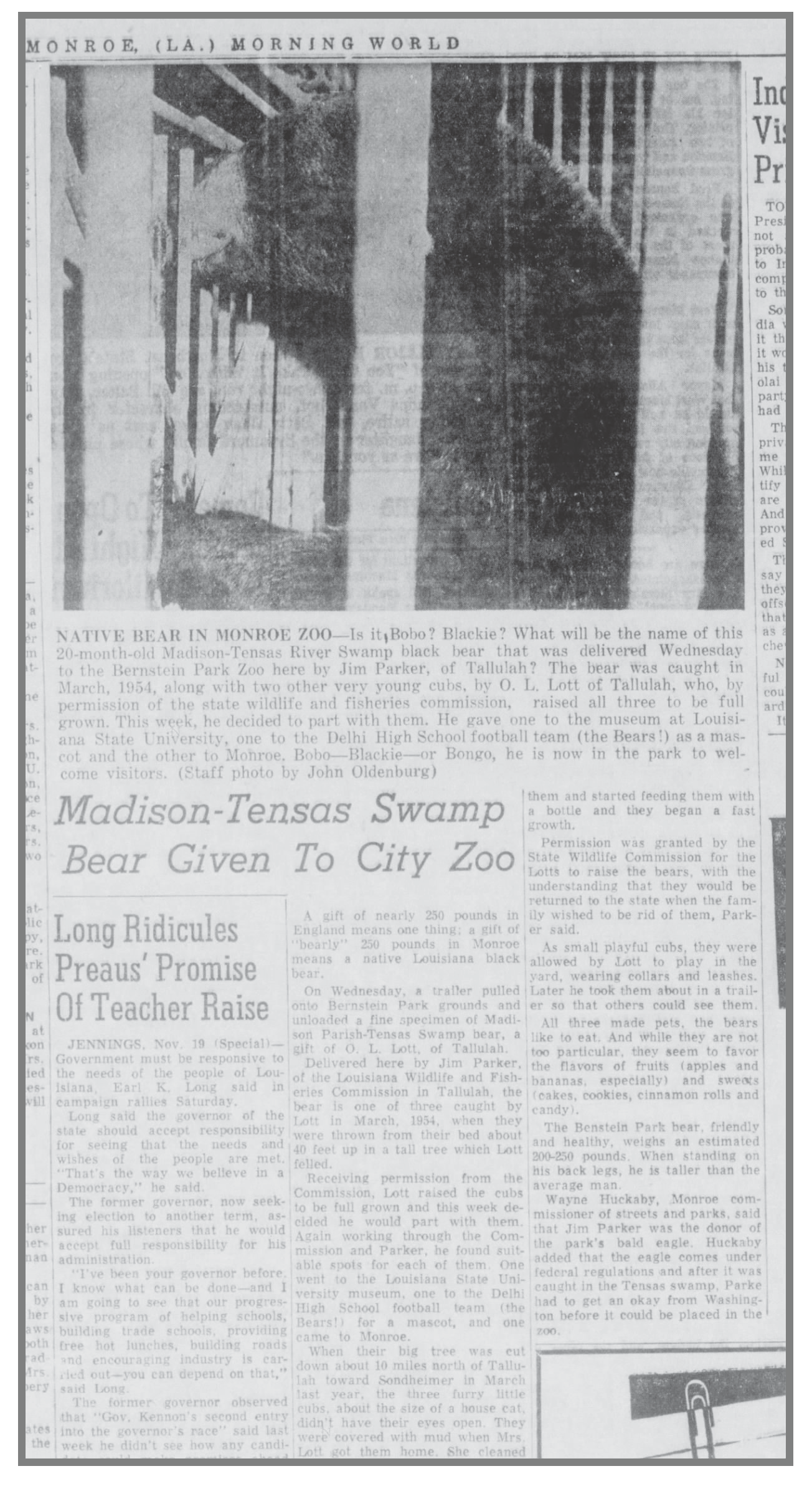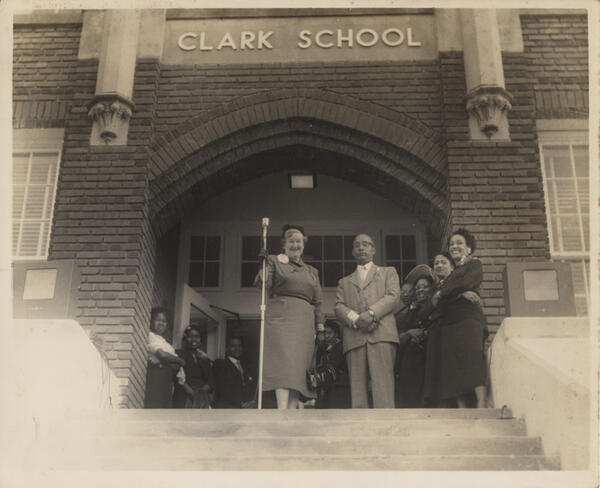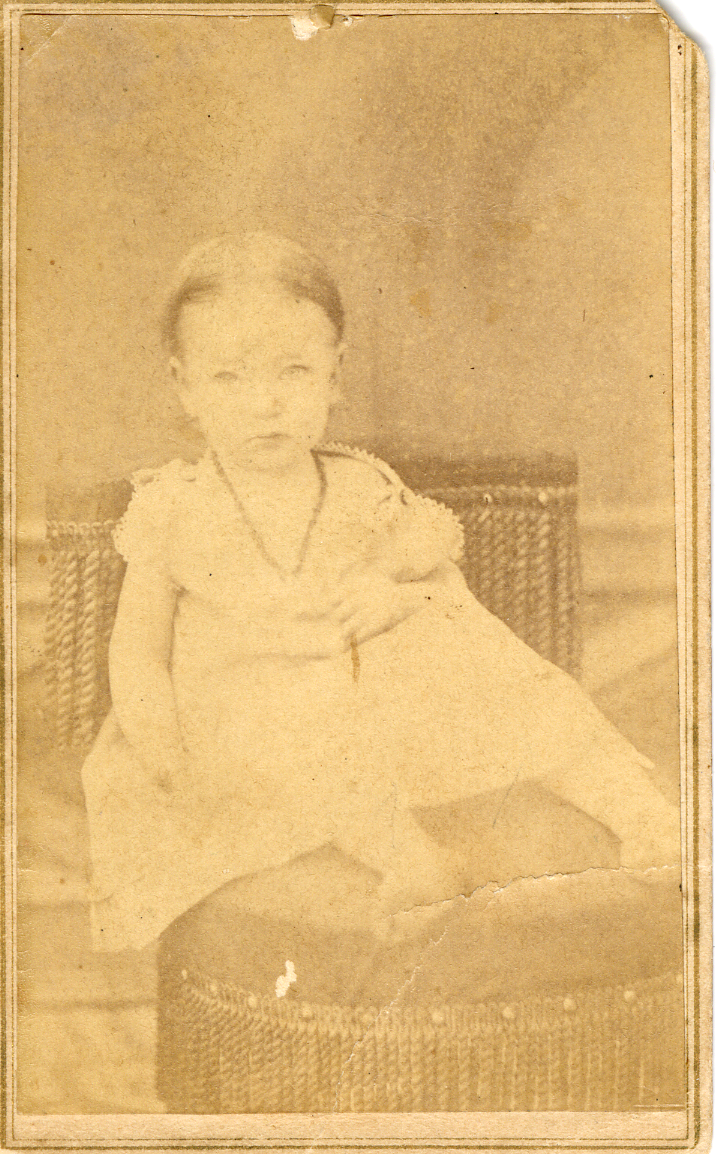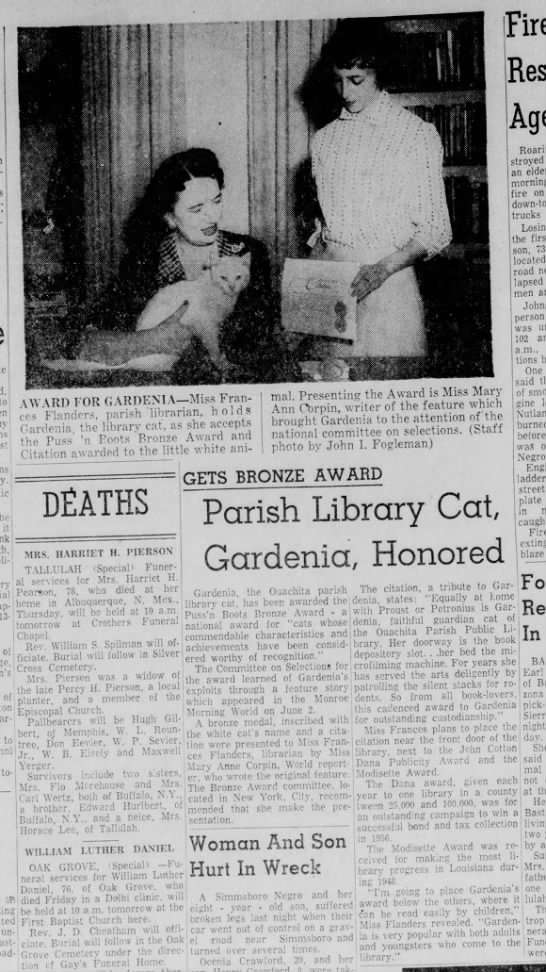Genealogy Blog
 Processing Request
Processing Request
Ernest Long Neville: The Educator Who Impacted Generations
Ernest Long Neville: The Educator Who Impacted Generations
Much of the early excellence found in Monroe City Schools can be credited to a man born January 17, 1876 in Damascus, North Carolina. Ernest Long Neville, the second of 15 children, was born to William and Sarah Neville, a family who valued education. Neville’s grandparents donated land for the use of a university in North Carolina and his parents sent all their children to the neighborhood school. Neville’s leadership qualities were evident at an early age as he was selected to carry the lunch basket to school each day so that he and each of his siblings would get their share.
When Neville finished high school, he borrowed money to attend the University of North Carolina at Chapel Hill. After graduating in 1900, he returned home to teach. He also led Sunday school classes. Anxious to repay his debt, he left North Carolina in 1901 for Louisiana, where he took a better paying position as a Latin teacher and assistant principal at Monroe City High School. It was there Neville met Allie Davis who was also a teacher. The couple married June 4, 1904. They traveled back to North Carolina for their honeymoon so that Allie could meet Neville’s family and then the happy couple returned to Monroe to make their home. In 1910, Neville became principal of Monroe City High School. As the system expanded to include more elementary schools, Neville became superintendent of schools.
Monroe City High School offered two diplomas for their graduates. One was the state approved Louisiana Diploma, and the other was the Monroe City High School Diploma showing advanced academic coursework. With his high academic standards, Neville had the approval of the people of Monroe, especially teachers. In the 1922 Squeedunk yearbook, Julia Wossman wrote of the academic excellence stressed by Neville. Courses offered included 4 years of mathematics and English, and 3 years of French and Latin. Wossman went on to become the first principal of Barkdull Faulk School, named for Leonidas Barkdull Faulk, a well-known Monroe surgeon who died while serving in the Medical Corps during World War I. Later, Wossman High School was named for Julia Wossman. In 1931, when a new city school was built, it was named Neville High School in honor of Ernest Neville. Neville High School also offered a separate “Neville Diploma” showing completion of advanced coursework. While Ernest Neville had high academic standards, he also was a fair and even-tempered mentor to his students. The book, Who’s Who in the Twin Cities published in 1931 by H. H. Brinsmade, states that Neville has never been known to lose his temper.
Ernest Neville retired as superintendent in the fall of 1948. Monroe Mayor George Breece issued a proclamation in honor of Ernest Neville and his long and faithful service. December 20, 1948 was set aside and known as E.L. Neville Day for his contribution to education and the development of the Monroe School System. The public was invited to attend E.L. Neville Day where a program was held at 8:00 in the evening at Neville High School. The closing event of the program was a presentation to Neville by alumni, associates, and Monroe friends and admirers of a “fine new Dodge custom sedan” according to the Monroe Morning World December 19, 1948.
Ernest and Allie Neville celebrated their 50th wedding anniversary June 1, 1954. After his retirement, Neville enjoyed the construction and navigation of boats on the Ouachita River. He was responsible for the free Lyceum courses given in the City School auditorium, and he was active in the Masons, the Rotary Club and the Red Cross. He was a board member for the Louisiana Training Institute and he enjoyed repairing clocks in his free time with his favorite being the old-timey kind. He died March 12, 1957. His death was announced on the front page of the Monroe News Star that day and Neville High School was closed the next day, March 13, 1957. All sports events for Neville High School were cancelled March 12 and 13 in his honor.
Sources:
Who’s Who in the Twin Cities published by H. H. Brinsmade 1931
The Hour Glass August 15, 1933 article “Monroe’s Beloved Educator” (LDL)
Monroe News Star Oct. 26, 1932 article “Monroe’s School System Not Old”
Monroe Morning World Dec. 19, 1948 proclamation
Monroe Morning World June 25, 1966 2 Diplomas at Neville High School
Monroe News Star World March 12, 1957 obit
Ouachita Parish Public Library Historic Documents, Kate Smith Diplomas
Lions, Tigers and Bears Oh My! Animal mascots in and around Ouachita Parish
Lions, Tigers and Bears Oh My! Animal mascots in and around Ouachita Parish
Dorothy from the movie Wizard of Oz would have found lions, tigers and bears plus a few other live animal mascots in and around Ouachita parish if she had traveled here instead of Oz. At one time, Ouachita Parish High School had a live Lion, Neville High School had a live tiger and Delhi High School had a live bear. Other mascots have included bulldogs, a monkey, a racoon and of course, a cat, Gardenia, the Ouachita Parish Library Cat.
The earliest record of an animal mascot in our area is that of Louisiana Tech. The legend of their English Bulldog mascot dates to 1899 when a stray bulldog followed a group of five students home from class. Legend is that a fire broke out during the night and the bulldog saved the students by alerting them but that first bulldog did not survive (orgs.latech.edu). There have been a succession of bulldogs at Louisiana Tech since then and Louisiana Tech introduced Tech XXII in 2018 (latech.edu).
In 1926 the Central Fire Station selected a racoon as mascot. The men of the station had tried several cats and even a rattlesnake before adopting “Coon” (Monroe News Star August 19, 1926). In 1942, the Monroe Fire Department had a monkey named Pedro for a mascot. Pedro was a gift from James A. Noe (Monroe Morning World December 20, 1942).
In 1956, Delhi High School received one of three bears that were raised from cubs and then given to new homes. One bear went to a zoo in Baton Rouge, one to Monroe’s Bernstein Park, then home to the Zoo and the third went to the Delhi football team for a mascot. Both the Bernstein bear and the Delhi bear were housed at the zoo with the Delhi bear being available for travel to football games (Jan. 5, 1956 Monroe News Star).
In 1963, students at Neville High School raised money to purchase a six-month-old tiger cub. The tiger lived at the Louisiana Purchase Gardens and zoo and was named Shasta. Shasta attended pep rallies at the school and traveled to football games in a special truck and cage. Shasta rode in a parade in 1966 when Neville played the Ruston Bearcats. Shasta died February 16, 1972 after battling influenza and afterward Shasta II was purchased. Information and a picture from the 1980 Neville Yearbook, the Monroyan, shows Shasta III who was also known as Big Red.
Ouachita Parish High School had a lion mascot named Cheepa. Cheepa was an African lion who was born and raised at the zoo. He attended football games from the time he was a cub through the 1975 football season. Cheepa died June 12, 1976 (June 1976 News Star). Cheepa must have had a successor as a February 8, 1988 News Star World Article indicates that both Neville and Ouachita Parish had live mascots that lived at the Louisiana Purchase Gardens and Zoo and were taken from the Zoo to pep rallies and football games. By this time both school systems and Zoo officials were considering the liability involved in having students and adults take big cats away from the zoo even though there had been no problems with the arrangement that been in place for 25 years.
The University of Louisiana Monroe selected the Warhawk as mascot in 2006. Capri, a red shoulder hawk, travels to all home football games and lives at The Louisiana Purchase Gardens and Zoo (4-17-20 myarklamiss.com). Before the Warhawk, Northeast Louisiana State College officially adopted the Ouachita Indian as mascot of Northeast Louisiana State College in 1959. Between 1959 and 2006 different students portrayed “Chief Brave Spirit” riding various spotted horses during football games. Grambling State University dates to 1901 (gram.edu), but their mascot was named Eddie the Tiger in 2014 after the great Eddie Robinson (thecelebrationbowl.com).
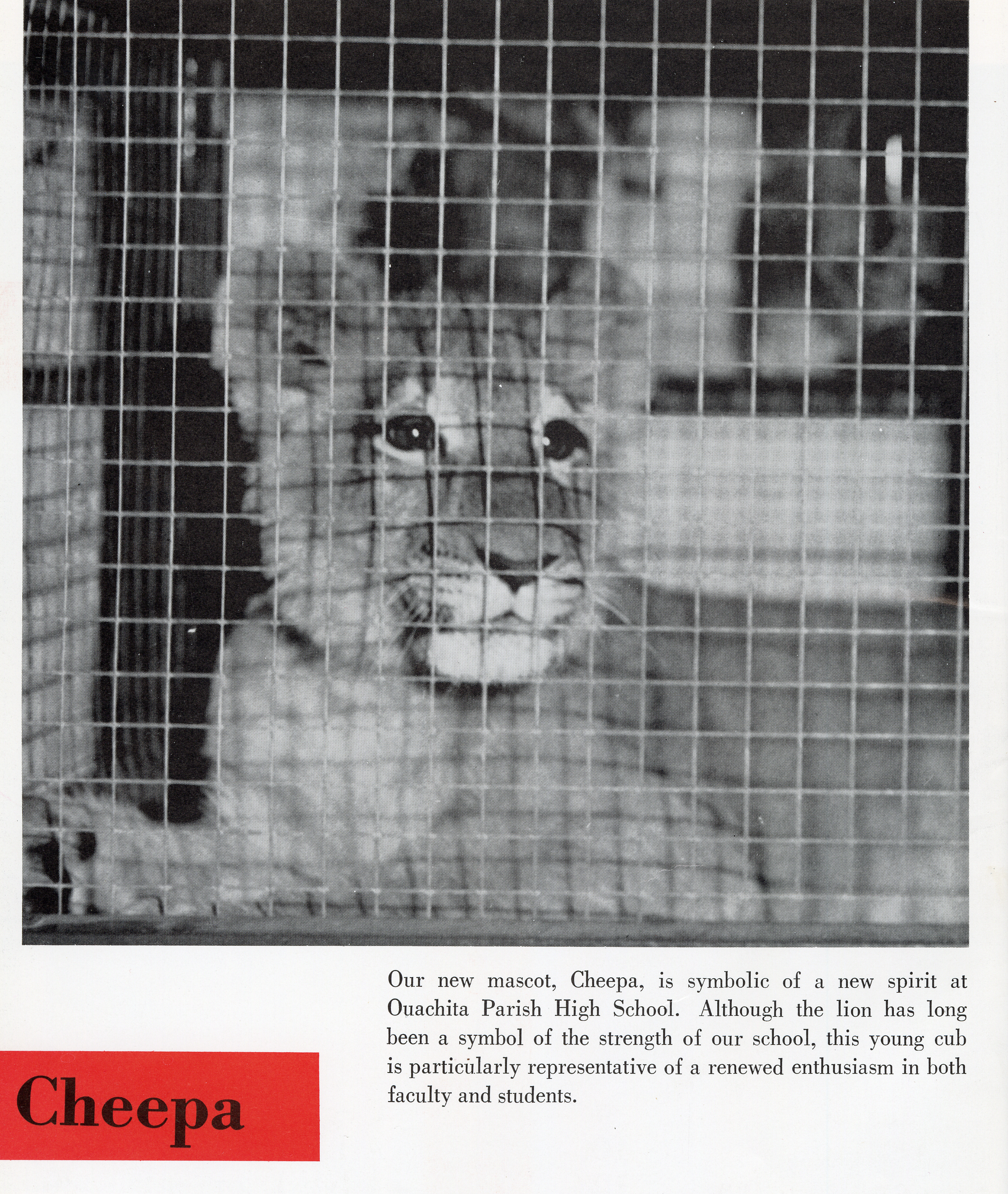
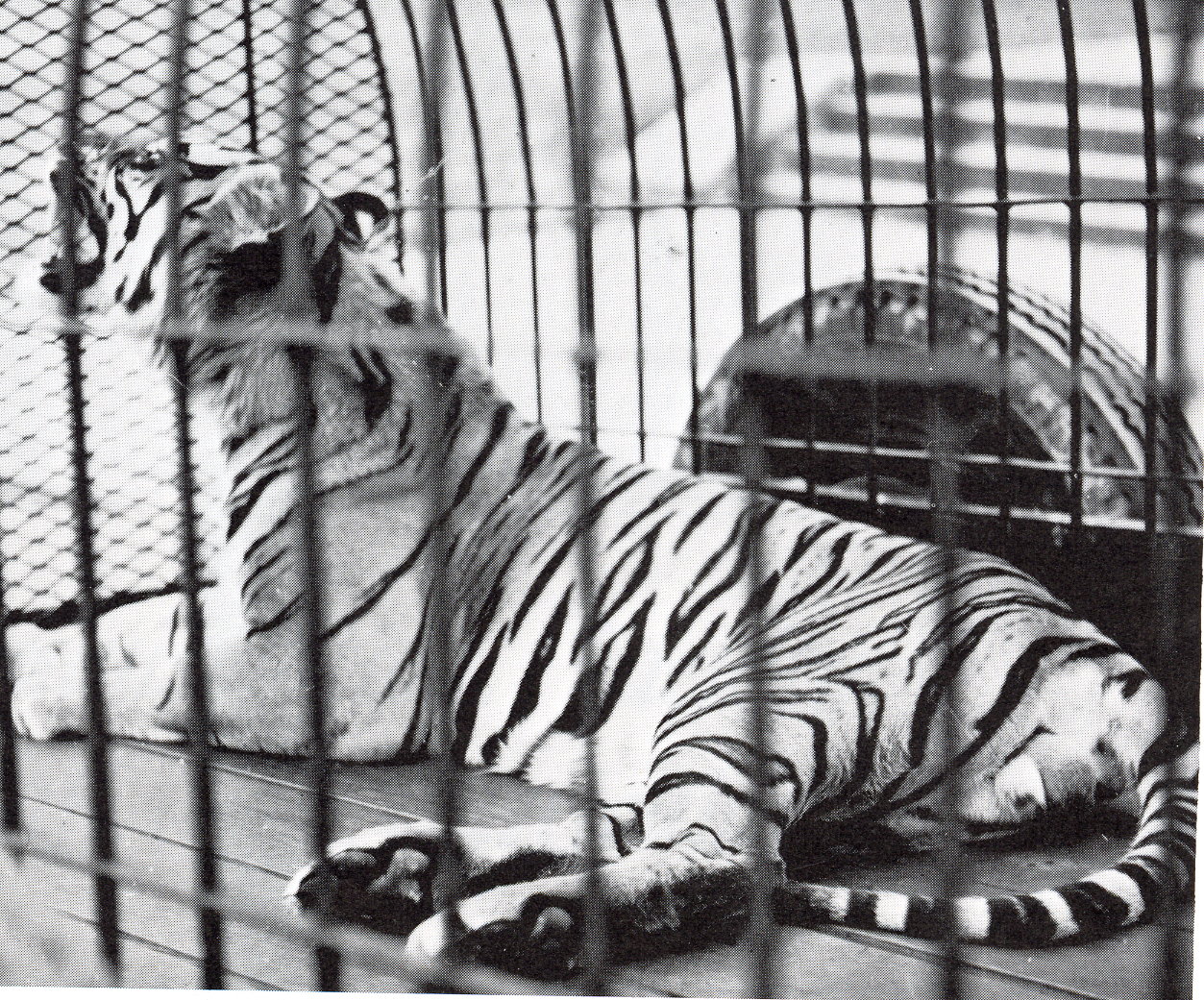

From the Archives: B.D. Robinson, Monroe's activist, educator and legend
From the Archives: B.D. Robinson, Monroe's activist, educator and legend
Bernie Dayton “B.D.” Robinson is remembered by many in our region as an active leader in the Black community, dedicating his life to activism and education. The Ouachita Parish Public Library Genealogy and Special Collections Department is home to resources that provide biographical information on some well-known Monroe residents, including Robinson. These documents help preserve the memory of this great man and many other people like him.
Born to sharecroppers on February 17, 1910 in Ouachita Parish, B.D.’s early life was dedicated to school. At age 14, he convinced his parents to allow him to leave Monroe to attend Straight College High School, a church-sponsored prep school in New Orleans, where he did janitorial work in exchange for room and board. B.D. went on to graduate from Dillard University in 1936. He wanted to be a doctor, but as he noted in the Library’s biography file, “the Depression caught up with me.” Instead, B.D. started his career in education. He taught math and science and coached basketball in Vernon, West Carroll, Madison and Ouachita Parishes. He was principal of J.S. Clark School from 1953-1974. Ever the student, B.D. earned a Master of Arts from St. Louis University and completed advanced study at Atlanta University and Washington University in St. Louis, Missouri.
Seeing a gap in post-secondary educational opportunities for Black students, B.D. and Emily Robinson, his wife of 57 years, opened the Robinson Business College in 1944 and continued to operate the school until 1986. The Library archival file of the school includes college catalogs, graduation programs and photographs that are integral to this piece of Monroe history.
In addition to his dedication to education, B.D. was an active community leader. Of note to the Library, he was integral in the establishment of the Carver Branch Library (now the Carver-McDonald Branch Library). The branch first opened in 1949 after a request from B.D. and the Colored Chamber of Commerce, as the Library system at this time was not integrated. Library services were first offered to the Black community out of Carroll Auditorium. After B.D. helped raise thousands of dollars, the Library purchased and renovated a Selman Field barracks building for the Carver Branch.
In 2001, B.D. was awarded the Monroe Chamber of Commerce’s Silverstein Award for leading the fight for equality and registering to vote in 1939. He, Eluen Hoston, Alex Brown, E.W. Sims and H.H. Marbles were the first Black people to register to vote in Ouachita Parish after Reconstruction. Robinson was also active in the Ouachita Valley Council of Boy Scouts, the Highway Safety Commission, the Northeast Louisiana Sickle Cell Anemia Foundation and was appointed to the Monroe City Council to fill the term of the late Charles Johnson between 1994-1996.
B.D. died July 12, 2002, in Ouachita Parish. His life’s work continues to impact generations of Ouachita Parish residents today.
Much of the information in this article was pulled from the Library’s primary resources, including:
- A copy of B.D.’s funeral program, found in the African American Funeral Program Book. This book is in the Library’s Genealogy Room and is accessible for reading during open hours.
- Biography files. These files contain historical and genealogical information, usually donated by the family or collected from various publications such as newspapers. They are also available in the Genealogy Room during open hours.
- Louisiana Digital Library. Ouachita Parish Public Librarians continually work to digitally preserve rare and historic photographs. The photos below are publicly accessible in the Louisiana Digital Library.
Explore all Family & Local History resources here.
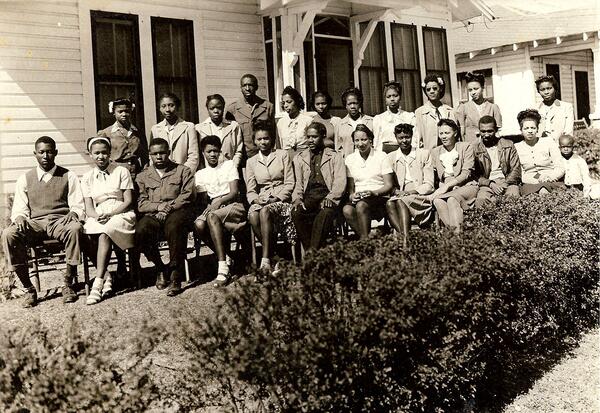
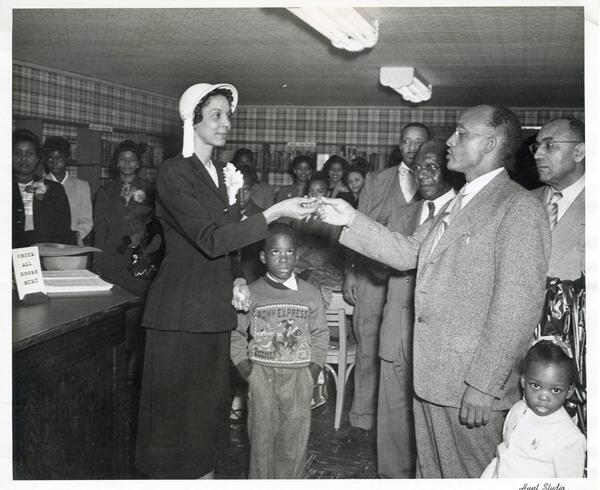

Generations of Julias - Library patron discovers her own family history using Library resources and personal interviews
Generations of Julias - Library patron discovers her own family history using Library resources and personal interviews
When Julia Scott inherited her grandmother’s family photo album, she knew it was something special. Julia Elizabeth Dabbs Scott – called Grandma Scott by today’s Julia Scott – held on to the album her entire life. Delicate to the touch, the binding was in bad shape but the photographs were pristine.
Inside the fragile book were dozens of historic images. These black and white photos date back to the times of Mealy, a renowned photographer in the Monroe region during the late 1800s. These photographs depict generations of Ms. Scott’s ancestors, frozen in time, including a portrait of a baby, who our librarians believe is Grandma Scott.
Ms. Scott graciously donated her family photo album to the Ouachita Parish Public Library. Cyndy Robertson, who serves as an archivist, librarian and the Head of Genealogy and Special Collections Department, spent days painstakingly and carefully removing the photographs from the dissolving pages of the album. She then scanned the photographs into computer software so that the images would be digitally preserved for posterity. They are available to view in the Louisiana Digital Library.
Ms. Scott has been researching her family history for decades. When she lived in New Orleans in the 1960s, she conducted research at the libraries there, but unfortunately lost her paperwork during numerous moves across the country. She picked up her research again and met with Library Genealogist Lora Peppers. Pulling from conversations with her aunt, Ms. Scott sought out to confirm some of the oral history stories with written records in the Library.
“There’s a marvelous little book in the Library,” Ms. Scott said. “Genealogy is a very large puzzle. I got an awful lot out of that source.”
Through the years, Ms. Scott heard stories about the heroes and villains of her family. Her aunt told her a story about a distant relative who was killed by his brother-in-law when he tried to attack his own wife. She thought it may have been a tall tale, but was able to confirm the story with an old newspaper article detailing the ordeal by using Newspapers.com (free to use with your Library card).
Ms. Scott also heard a great number of stories of the fortitude of her grandmother’s grandparents, Dr. Christopher Hunt Dabbs and his second wife, Julia Washington Muse Dabbs. She was told Dr. Dabbs was a well-respected physician in the area. Ms. Scott was later delighted when she found an old letter written to and from two ladies who had no connection to the Dabbs family, other than their detailing of Dr. Dabbs being incredibly helpful and supposedly handsome. Ms. Scott also heard many stories about the educational and philanthropic work of the eldest Julia (Julia Elizabeth Dabbs Scott). She was integral in founding the Monroe Catholic Church and school. She served as a teacher at the school until she wrote to the archdiocese to bring in a priest.
“Genealogy is a great pastime. Include your current family and get them into it, so it gets carried on and carried forward,” Ms. Scott said. “It’s another way to hold the family together.”
Explore the Library's free Family and Local History resources here.
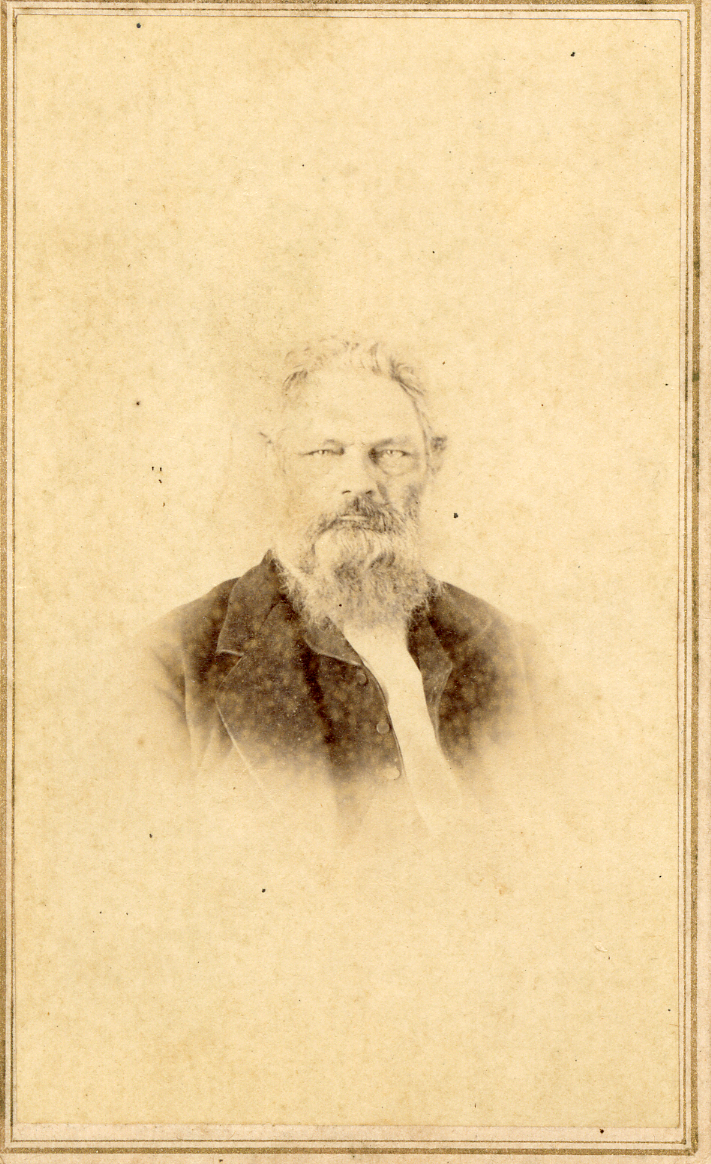
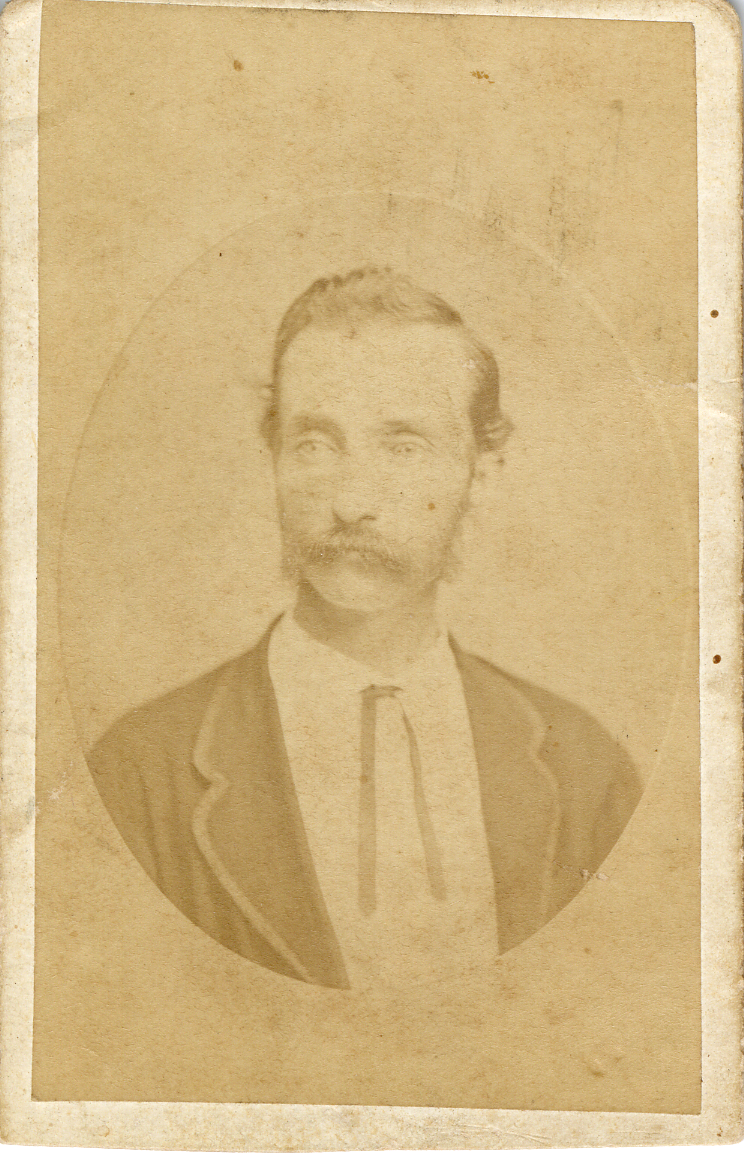
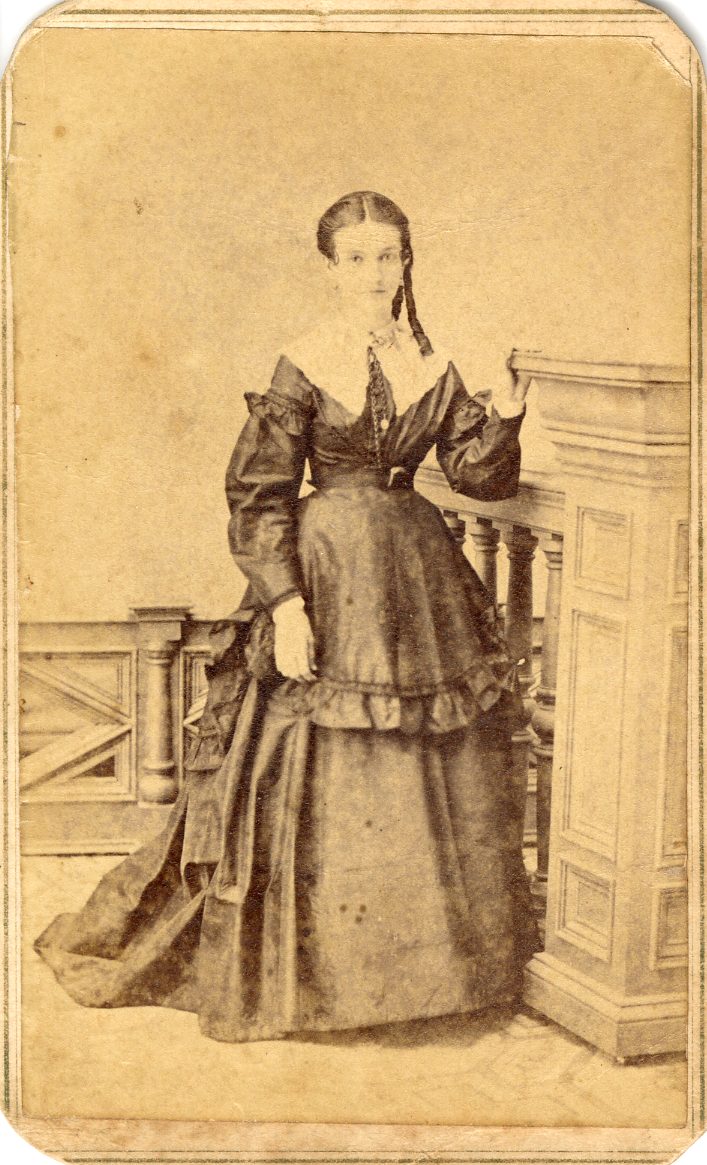
Record your family history during the holidays
Record your family history during the holidays
Have you ever wanted to research your family history and genealogy, but weren’t sure where to start? The holidays are a great time to begin your research as you may visit with family. If you have an opportunity to interview an older family member, be sure to take advantage of the moment. You will learn about your ancestors and your relatives will enjoy sharing their stories.
The best place to start in your genealogy research is with yourself. Record your full name, birthdate and place and your parent’s names. Then work backwards from your parents to your grandparents with the same information. Keep track of what you find with a genealogy chart, in a notebook or in your computer files. If you use a computer, don’t forget to back up your records to the cloud. Document the information you find and where you found it.
Personal interviews can be a vital source for your family history or genealogy research. Here are some basic questions you can use to begin your genealogy research and some open-ended questions that can be used to get good family conversations started. You should either record the interview or take notes.
- What is your full name and why were you named that (include maiden name for women)? Were you named after someone else? Did you have a nickname? Why were you called that?
- When and where were you born?
- What is your religion and were you baptized or christened? Church records can be a source for genealogy. Do you have a family Bible with family records?
- Where was your first home?
- What were your earliest memories of your home?
- What are the full names of your brothers and sisters? Do you have a favorite memory of your brothers and sisters?
- What did your family do for fun when you were a child?
- What chore did you hate doing as a child?
- Did you read? What books were your favorite? Did you have a favorite bedtime story?
- Where did you attend school? What was it like? Favorite subject? Least favorite subject?
- What did you want to be when you grew up? How did you decide on a career? College?
- What was work like? What were the hours?
- What wars have been fought during your lifetime? Were you in the military?
- When and where did you get married? Include the date, place and/or church. Describe the ceremony and attendants.
- Who is the oldest person you can remember as a child?
- How is the world different from when you were a child?
Learn more about genealogy at the Library's virtual program series:
Genealogy 101
December 8 at 10:30 a.m. on Facebook Live
Where do you even begin researching your family history? Learn what questions to ask, what resources to collect and more on Facebook Live.
Genealogy 102
January 12 at 10:30 a.m. on Facebook Live
Now that you've collected your basic family information, learn how to move forward with Library resources like Ancestry.com, Newspapers.com and more on Facebook Live.
The Ouachita Parish Public Library has a designated Genealogy and Special Collections Department. Our staff are experts in genealogy and family history research. They can show you how to use resources like Ancestry.com, Newspapers.com and more. You can access many of these resources with your Library card from your own home. Many of these resources include written records. Written records are great if they exist and if you can find them. Written records record the facts, but a good interview can help you learn the rest of the story.
If you have a question about genealogy or ever get stuck researching your family history, reach out to the Library’s Genealogy and Special Collections Department, located in the Main Branch Library at 1800 Stubbs Avenue in Monroe. The Department’s hours are from 9 a.m. – 6 p.m. Monday-Friday and from 9 a.m. – 5 p.m. on Saturday. You can also email the librarians at genealogy_SC@oplib.org or call them at 318-327-1490 ext. 3022.
Meet Gardenia, the little Library cat of lore
Meet Gardenia, the little Library cat of lore
Decades ago, rats were a problem in libraries. To get rid of the problem, many libraries got a cat. Ouachita Parish was no exception.
In the early 1950s, Library Director Frances Flanders had a rat problem. The rats were eating away at the magazine collection. A Library patron named Faith Johnson heard about the dilemma and gave the Library a female kitten. The little kitten was pure white with pinkish ears. The librarians fell instantly in love with her. The newest staff member was dubbed “Gardenia” after a cat in a book one of the librarians had read. Gardenia earned her keep, as the rat problem was soon taken care of!
Gardenia grew into a sociable animal. Patrons who would sit down to do research would most likely soon find a lap full of cat! She allowed the children to carry her around without a mew of protest. It was said she never scratched a soul. She loved educational films and sat quietly with the children to watch. Patrons loved her. As a matter of fact, one wrote a poem about her, which appeared in Cats Magazine.
Gardenia would not eat alone. Ms. Flanders tried to feed her on the front steps, but Gardenia would not touch her food without someone there. Ms. Flanders soon learned to eat her lunches with Gardenia in her Library office. One of Gardenia’s favorite foods was cottage cheese. She demanded her share of any that came in the building.
As well as being social, Gardenia was a very curious cat. When a new shipment of books came in, she would sit on it until her curiosity was satisfied! When the new copier came in, Gardenia went inside it, made herself comfortable and began using it as her bed at night.
Gardenia’s official cat door was the book slot in the front door. Gardenia coming out of her cat door was recorded for all posterity. In 1952, the Library hired a film crew come shoot video of the branches. While filming the front door of the then Main Branch on Jackson Street, Gardenia jumped out of the book slot! The filmmaker decided to use the shot and it became the opening of the film.
One of the local newspapers wrote a feature article about Gardenia in 1957, complete with pictures. It caught national attention. Three months later, Gardenia was awarded “The Puss’n Boots Bronze Award Citation” for “outstanding custodianship.” Ms. Flanders displayed it proudly next to the prestigious John Cotton Dana and Modisette Awards the Library had won. It was also during this time that Gardenia was “catnapped.” Someone broke down the door of the Library and the next morning, she was gone. It was assumed the burglar had stolen Gardenia. A few hours later, she reappeared. She was shaken and upset but the staff was ecstatic. Ms. Flanders thought Gardenia had managed to outsmart her captor and escape. She probably had been frightened by the noise and ran away to hide.
In the spring of 1959, the new Main Branch opened where it stands today on Stubbs Avenue. It was feared that Gardenia would not take the change well. She had never ventured more than a half block from the Jackson Street location and hated cars. After the staff moved her and opened her kennel, Gardenia explored her new kingdom and found it worthy. Everyone breathed a sigh of relief.
As the years wore on, Gardenia went into semi-retirement. She spent most of her days in the filing room on a white satin pillow. She still loved the kids and would make her appearances every now and again.
On June 12, 1963, Gardenia passed away from illness. It is not known where she was buried. All that remains of Gardenia’s memory are a few yellowed newspaper clippings, her brief image on film and her framed award which can be found in the Library’s Genealogy Department. Local Baby Boomers and those of the Greatest Generation however, will never forget the little white cat who brought such joy to Library patrons in Ouachita Parish.
Note: This article was originally published in the October/November issue of Cattails. Our librarians used the resource Newspapers.com for research. Newspapers.com is a free resource with your Library card.


